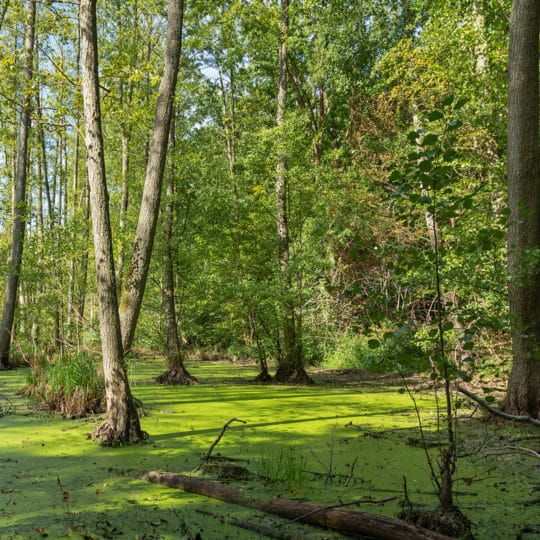Removing a Fallen Tree
And What to do Next
Posted
October 3, 2019

If a tree falls on your property and no one removes it, does it create a problem? How you answer this question depends on where you live. Learn more about if you need to remove a fallen tree and how.
Should I Remove a Fallen Tree
No matter how it fell—storm, fire, disease, or other natural disasters—one of the first questions homeowners ask is if they should remove it. Most of the time, the answer is yes. If it falls in your yard, you’re going to want to get rid of it to properly maintain your lawn and help prevent the spread of disease.
If it falls in a wooded area of your property, the decision is up to you. This is one instance where you can let nature take its course. Unless, of course, the tree is at risk of spreading disease to nearby plants.
The reason why the tree falls also helps determine how best to remove it. Typically, healthy trees that fall because of natural disasters are covered under homeowners insurance. Even if it caused no damage to your home, the municipality provides aid in tree removal. However, the chances of getting help decreases if the tree was in poor health.
Before you do any tree removal planning, determine if the tree is even your responsibility. Trees in public areas are usually maintained by local agencies. Consult your property map to check if it’s really your neighbor’s tree that has fallen. If you’ve consulted the appropriate parties and it’s determined it’s your responsibility, it still may not be all bad news.
A Tree Fell, Now What?
First, you want to make sure the area is safe to work around. If the entire tree is on the ground, you can start to plan how to cut it up. But if there are still parts hanging, ripped, or dangerously close to a structure, it’s best to call a professional. Even though there are easy ways to break up the branches with a chainsaw if you don’t have the experience using these kinds of tools enlist the help of someone who does.
Here’s what you’ll want to focus on:
- Safety first! Don’t operate any equipment you’re not used to or comfortable with. Protect yourself if you decide to use any power equipment yourself.
- Remove any branches from the trunk.
- Break up the trunk into smaller, more manageable pieces.
- Either give the wood away, have it hauled away, or store it in a safe location.
There are many uses for all this extra wood that just landed in your yard.
- Firewood. If you have a fireplace or fire pit, you won’t have to worry about purchasing firewood for a while. If you don’t have a need for it, you can always sell it or give it away.
- Landscaping. Use large sections of the trunk for an outdoorsy bench or stools. A tree stump also makes a sturdy table base or planter.
- Lumber. Some trees are highly sought after for construction. If it was healthy before it fell, you could use it or sell it for making furniture or other woodworking projects—especially if you have a mature walnut, cherry, redwood, or another furniture-grade wood tree.
If you have large trees in or around your property, it’s always a good idea to plan and prepare for any of them to fall. Contact Elite Tree Care for more information on how to remove a tree and what to do with it once it comes down.

Download Your FREE Tree Removal Guide
Even dedicated DIYers should think twice before taking on the task of tree removal. Our guide will help you decide whether to hire a tree service and how to get the most value for your money.